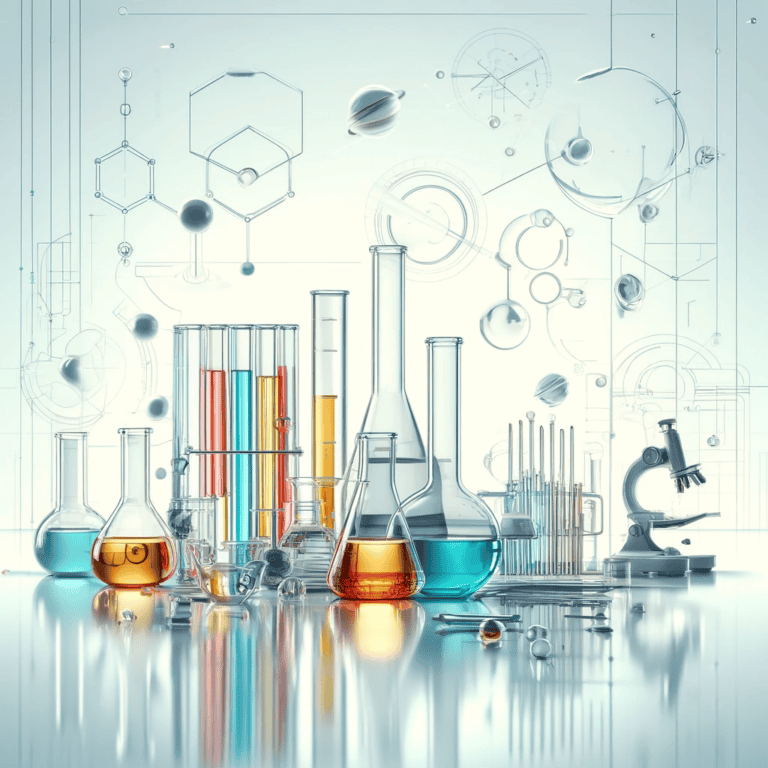Innovations in Plasma Catalysis: A Review
Using the selectivity of catalysts and the reactivity of plasma, plasma catalysis opens up new possibilities in catalytic science by facilitating effective chemical reactions in mild environments. With an emphasis on its uses in green chemistry, energy efficiency, pollutant degradation, and nitrogen fixation, this overview showcases recent developments in plasma catalysis. It explores the ways in which plasma and catalysts work in concert to activate molecules more effectively and facilitate reactions that are otherwise impossible. The development of new catalytic materials aimed at enhancing the plasma-catalytic interface and raising the reactions’ selectivity and energy efficiency is also covered. In addition, the research looks at how plasma catalysis contributes to the breakdown of contaminants, offering a long-term solution for environmental cleanup. In order to demonstrate the potential of plasma catalysis in renewable energy applications, nitrogen fixation—a crucial step in the synthesis of ammonia under ambient conditions—is also examined. This review highlights the importance of plasma catalysis in developing sustainable chemical processes and highlights its implications for future improvements in catalysis and environmental science through a thorough overview of current research and technology advancements.

Overview of Plasma Catalysis
The novel field of plasma catalysis uses catalysts and plasma to improve chemical reactions (Neyts, 2015). For uses like CO2 conversion and NH3 synthesis, it has attracted a lot of attention (Bogaerts et al., 2020). Plasma catalysis can drive reactions at lower temperatures and overcome conventional catalytic problems by employing energetic species such as electrons and ions (Huygh et al., 2018). For example, under mild conditions, plasma catalysis in ammonia synthesis allows NH3 generation from N2 and H2O dissociation (Zhang et al., 2022).
Unlike other approaches, plasma catalysis addresses kinetic and thermodynamic limitations by selectively activating chemical bonds through the use of the energetic species found in plasma (Mu et al., 2020). This strategy has shown promise over traditional techniques in reactions like ammonia synthesis and methane dry reforming (Mehta et al., 2019).
When opposed to high-temperature procedures like the Haber-Bosch technique, plasma catalysis has the benefit of operating at room temperature, which results in energy savings and a smaller environmental effect (Wang et al., 2022). Furthermore, it permits some reactions that conventional catalysis might not be able to accomplish (Mehta et al., 2019). Another promising use of plasma catalysis is the small-scale, decentralized synthesis of ammonia utilizing renewable energy sources, providing an energy-efficient substitute (Wang et al., 2022).
Even with its advantages, plasma catalysis has drawbacks such scalability problems and energy consumption (Cherkasov et al., 2015). Large-scale application is hampered by the energy-intensive nature of some processes, particularly those involving metallocomplex nitrogen fixation (Cherkasov et al., 2015). For plasma catalysis to be widely used, these issues must be resolved (Cherkasov et al., 2015).
To sum up, plasma catalysis is a viable method of selectively activating bonds while driving reactions at room temperature. Compared to conventional catalytic methods, plasma offers advantages by utilizing its special features. But in order to fully fulfill its potential in a variety of chemical conversion applications, it must overcome challenges related to energy consumption and scalability.
Recent Advances in Plasma Catalysis
The goal of recent developments in catalyst materials has been to increase the selectivity and efficiency of processes that are plasma-catalyzed. Studies on the function of Eley–Rideal reactions in plasma catalysis for ammonia synthesis have shown the importance of interactions between plasma-activated species and catalyst pores/active sites (Engelmann et al., 2021). Additionally, advancements in Ni-based catalyst-assisted dielectric barrier discharge plasma-assisted catalytic reactions have shown enhanced CO selectivity, highlighting the possibility of catalyst design to optimize reaction outcomes (Gao et al., 2021).
Research on the use of different reactor topologies, such as packed-bed reactors and dielectric barrier discharges (DBD), to enhance the interaction between catalysts and plasma has advanced in terms of reactor design and optimization. The objective of these designs is to create effective systems that utilize plasma as a catalyst for a range of uses (Gao et al., 2021). Researchers have successfully controlled the production of ammonia by manipulating the surface nitrogen species by hydrogenation that is programmed by plasma temperature. This underscores the significance of reactor engineering in plasma catalysis (Barboun et al., 2022).
Applications for plasma catalysis in chemical synthesis, energy production, and environmental remediation are numerous. Nonthermal plasma catalysis has been used in studies to investigate sustainable hydrogen and ammonia technologies, with an emphasis on the processes’ potential environmental benefits and energy efficiency (Lim et al., 2023). Furthermore, multimetal borides nanochains’ effective water splitting and the synthesis of polycyclic indole skeletons demonstrate the adaptability of plasma catalysis in a variety of application contexts (Li et al., 2018; Lim et al., 2023).
The creation of bio-based catalysts for sustainable catalysis, such as the recovery of metal-charged biomass for palladium extraction, is one of the significant advances in plasma catalysis (Clavé et al., 2016). Furthermore, the use of bi-functional Pd(Au)@TS-1 materials in a one-pot, two-step method for the direct manufacture of propylene oxide demonstrates the potential of novel catalyst materials in promoting effective reactions (Prieto et al., 2016).
In conclusion, plasma catalysis is now positioned as a potential solution for a variety of chemical processes because to recent advancements in catalyst materials, reactor architecture, and application domains. Recent groundbreaking research has demonstrated that plasma catalysis can achieve excellent selectivity, efficiency, and sustainability in a variety of applications.
Future Perspectives and Directions
Plasma catalysis’s technological obstacles and research gaps:
Energy consumption, scalability concerns, and the optimization of plasma-catalyst systems for effective and sustainable chemical processes are among the current technological difficulties in plasma catalysis (Magureanu & Bradu, 2021; Neyts, 2015; Chen et al., 2009). There are research gaps in both closing the knowledge gap between theoretical studies and real-world catalysis applications and comprehending the intricate processes involved in plasma-catalyst interactions (Magureanu & Bradu, 2021; Neyts, 2015; Chen et al., 2009). For industrial applications of plasma-assisted catalysis, obstacles pertaining to large volume plasma generation, byproduct control, and aerosol collection must also be addressed (Feng et al., 2015).
New Developments in Plasma Catalysis:
The use of artificial intelligence and machine learning in plasma catalysis for catalyst design and process optimization is one example of emerging technologies (Lim et al., 2023). By facilitating quick screening of catalyst materials and reaction conditions, these technologies have the potential to improve the efficiency and selectivity of plasma-catalyzed reactions (Lim et al., 2023).
Plasma catalysis’s sustainability and environmental impact:
By facilitating energy-efficient reactions and utilizing green chemistry concepts, plasma catalysis presents the possibility of sustainable chemical processes (Lim et al., 2023). Compared to conventional high-temperature procedures, plasma catalysis can minimize environmental effect and consume less energy by selectively activating chemical bonds while working at ambient temperatures (Lim et al., 2023). To guarantee the environmental sustainability of plasma catalysis processes, however, issues with byproduct generation and emission management must be resolved (Feng et al., 2015).
Prospects and Conclusion Regarding Plasma Catalysis:
Future applications of plasma catalysis appear promising for tackling global issues like sustainable chemical synthesis and climate change. Plasma catalysis is ready for industrial scale-up and broad use in a variety of industries thanks to ongoing research efforts to overcome technological obstacles and optimize plasma-catalyst systems (Magureanu & Bradu, 2021; Neyts, 2015). Plasma catalysis can progress toward more sustainable and effective chemical processes, helping to create a more environmentally friendly and sustainable future, by utilizing cutting-edge technology like artificial intelligence and machine learning.
Reference:
Barboun, P., Otor, H., Ma, H., Goswami, A., Schneider, W., & Hicks, J. (2022). Plasma-catalyst reactivity control of surface nitrogen species through plasma-temperature-programmed hydrogenation to ammonia. Acs Sustainable Chemistry & Engineering, 10(48), 15741-15748. https://doi.org/10.1021/acssuschemeng.2c04217
Bogaerts, A., Tu, X., Whitehead, J., Centi, G., Lefferts, L., Guaitella, O., … & Carreon, M. (2020). The 2020 plasma catalysis roadmap. Journal of Physics D Applied Physics, 53(44), 443001. https://doi.org/10.1088/1361-6463/ab9048
Chen, H., Lee, H., Chen, S., Chang, M., Sheng, Y., & Li, S. (2009). Removal of volatile organic compounds by single-stage and two-stage plasma catalysis systems: a review of the performance enhancement mechanisms, current status, and suitable applications. Environmental Science & Technology, 43(7), 2216-2227. https://doi.org/10.1021/es802679b
Cherkasov, N., Ibhadon, A., & Fitzpatrick, P. (2015). A review of the existing and alternative methods for greener nitrogen fixation. Chemical Engineering and Processing – Process Intensification, 90, 24-33. https://doi.org/10.1016/j.cep.2015.02.004
Clavé, G., Garoux, L., Boulanger, C., Hesemann, P., & Grison, C. (2016). Ecological recycling of a bio-based catalyst for cu click reaction: a new strategy for a greener sustainable catalysis. Chemistryselect, 1(7), 1410-1416. https://doi.org/10.1002/slct.201600430
Engelmann, Y., Veer, K., Gorbanev, Y., Neyts, E., Schneider, W., & Bogaerts, A. (2021). Plasma catalysis for ammonia synthesis: a microkinetic modeling study on the contributions of eley–rideal reactions. Acs Sustainable Chemistry & Engineering, 9(39), 13151-13163. https://doi.org/10.1021/acssuschemeng.1c02713
Feng, F., Zheng, Y., Shen, X., Zheng, Q., Dai, S., Zhang, X., … & Yan, K. (2015). Characteristics of back corona discharge in a honeycomb catalyst and its application for treatment of volatile organic compounds. Environmental Science & Technology, 49(11), 6831-6837. https://doi.org/10.1021/acs.est.5b00447
Gao, X., Lin, Z., Li, T., Huang, L., Zhang, J., Askari, S., … & Kawi, S. (2021). Recent developments in dielectric barrier discharge plasma-assisted catalytic dry reforming of methane over ni-based catalysts. Catalysts, 11(4), 455. https://doi.org/10.3390/catal11040455
Huygh, S., Bogaerts, A., Bal, K., & Neyts, E. (2018). High coke resistance of a tio2 anatase (001) catalyst surface during dry reforming of methane. The Journal of Physical Chemistry C, 122(17), 9389-9396. https://doi.org/10.1021/acs.jpcc.7b10963
Li, Y., Huang, B., Sun, Y., Luo, M., Yang, Y., Qin, Y., … & Guo, S. (2018). Multimetal borides nanochains as efficient electrocatalysts for overall water splitting. Small, 15(1). https://doi.org/10.1002/smll.201804212
Lim, K., Yifei, Y., Gao, X., Tianxi, Z., Hu, F., Das, S., … & Kawi, S. (2023). Sustainable hydrogen and ammonia technologies with nonthermal plasma catalysis: mechanistic insights and technoeconomic analysis. Acs Sustainable Chemistry & Engineering, 11(13), 4903-4933. https://doi.org/10.1021/acssuschemeng.2c06515
Lim, K., Yifei, Y., Gao, X., Tianxi, Z., Hu, F., Das, S., … & Kawi, S. (2023). Sustainable hydrogen and ammonia technologies with nonthermal plasma catalysis: mechanistic insights and technoeconomic analysis. Acs Sustainable Chemistry & Engineering, 11(13), 4903-4933. https://doi.org/10.1021/acssuschemeng.2c06515
Magureanu, M. and Bradu, C. (2021). Catalysts: special issue on plasma-catalysis for environmental and energy-related applications. Catalysts, 11(12), 1439. https://doi.org/10.3390/catal11121439
Mehta, P., Barboun, P., Go, D., Hicks, J., & Schneider, W. (2019). Catalysis enabled by plasma activation of strong chemical bonds: a review. Acs Energy Letters, 4(5), 1115-1133. https://doi.org/10.1021/acsenergylett.9b00263
Mu, Y., Xu, S., Shao, Y., Chen, H., Hardacre, C., & Fan, X. (2020). Kinetic study of nonthermal plasma activated catalytic co2 hydrogenation over ni supported on silica catalyst. Industrial & Engineering Chemistry Research, 59(20), 9478-9487. https://doi.org/10.1021/acs.iecr.0c01477
Neyts, E. (2015). Plasma-surface interactions in plasma catalysis. Plasma Chemistry and Plasma Processing, 36(1), 185-212. https://doi.org/10.1007/s11090-015-9662-5
Prieto, A., Palomino, M., Díaz, U., & Corma, A. (2016). One-pot two-step process for direct propylene oxide production catalyzed by bi-functional pd(au)@ts-1 materials. Applied Catalysis a General, 523, 73-84. https://doi.org/10.1016/j.apcata.2016.05.019
Wang, Y., Yang, W., Xu, S., Zhao, S., Chen, G., Weidenkaff, A., … & Tu, X. (2022). Shielding protection by mesoporous catalysts for improving plasma-catalytic ambient ammonia synthesis. Journal of the American Chemical Society, 144(27), 12020-12031. https://doi.org/10.1021/jacs.2c01950
Zhang, T., Zhou, R., Shuai, Z., Zhou, R., Ding, J., Li, F., … & Cullen, P. (2022). Sustainable ammonia synthesis from nitrogen and water by one‐step plasma catalysis. Energy & Environmental Materials, 6(2). https://doi.org/10.1002/eem2.12344



